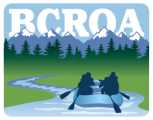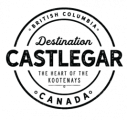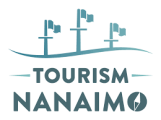Story by Sam Cutcliffe. Feature photo by Finn Steiner.
British Columbia’s coastline is a paddler’s paradise. From the remote beaches of Vancouver Island to the winding inlets of the Sunshine Coast, the coast offers a dynamic range of experiences. Dramatic headlands, lush forests, vibrant intertidal zones, and some of the most abundant marine life on the planet. Whether you’re looking for a multi-day expedition, a weekend island hop, or a quiet cove to explore close to shore, coastal paddling in BC delivers awe and adventure in equal measure. With over 25,000 kilometers to explore, the options are endless.
Curious where to begin? Check out the BC Marine Trails map for campsites, route info, and trip planning tools. While these places are extraordinary, they’re also sensitive to human impacts, which is why the BC Marine Trails Code of Conduct was created. It’s a practical guide to help paddlers reduce their impact, respect cultural and ecological values, and ensure BC’s coast remains healthy and accessible for future generations.

Respect First Nations Heritage
The entire BC coast is Indigenous land, home to 74 First Nations who have stewarded these lands and waters since time immemorial.
When planning your trip, always research the Territories you will be passing through, and specific guidelines outlined by the Nations(s). Refer to the BC Marine Trails map for site specific First Nations information, a message from the Nation when available, and links to relevant resources, stewardship fees, and more. To learn more on respectful visitation, head to BC Marine Trails visitation guidelines.
Golden rule: Disturb nothing, take nothing. One careless act can be culturally damaging to First Nations communities, jeopardize partnerships, and restrict access for everyone. Embrace Maya’xala, which is a Kwak̓wala term meaning respect for oneself and all beings.

Fires Without The Footprint
Always consult the BC wildfire service and local regulations before heading out on your adventures. Adhere to all fire bans. When fires are allowed:
- Build fires below the high tide line using only small driftwood.
- Allow the fire to burn down to white ash, to be swept away in the next high tide.

Human Waste Management
While some parks and popular marine trails provide composting toilets, many coastal areas, especially more remote locations, have no facilities. That means paddlers must be fully self-reliant. When visiting a BC or National Park, defer to park specific best practices.
- Do not dig catholes as coastal soils are often too shallow for decomposition, resulting in build up.
- Instead, use tidal flush well below the high tide line, in areas with strong current where waste will be naturally broken down.
- Pack out or burn your toilet paper, or consider natural alternatives like seaweed or smooth stones.

Keep Wildlife Wild
BC’s coast is home to diverse wildlife: black bears on remote beaches, sea otters floating in kelp forests, shorebirds nesting in dunes, and whales cruising through channels. Let’s do our part to keep them, and us, safe.
- Attractants include all scented items: deodorant, toothpaste, sunscreen, and yes that granola bar wrapper in your pocket.
- Give wildlife space. Never approach, feed, or disturb marine or terrestrial animals. If you cause an animal to move, you are too close.
- Store food and attractants properly in designated bear caches or kayak hatches and far from tents.

Gray Water Disposal
Avoid soap use, and dispose of all grey water below the high tide line.
- Opt for alcohol based hand sanitizers for hand washing.
- Wash dishes with warm water and natural abrasives like sand or gravel.
- If soap is used, ensure it’s biodegradable camp-friendly. Use it sparingly.

Leave The Coast Better Than You Found It
Why aim for no impact recreation when we can make a positive impact? Everyone can do their part to keep the marine sites they visit natural, and even make them better.
- Stick to established campsites and trails.
- If no clear tent sites are available, camp on durable surfaces, like sand, or rocks with no moss or lichen.
- Pack out everything, including food scraps.
- Collect and remove marine debris if space allows, and is safe to do so.
- Send in a Site Condition Report to help support management of coastal sites and to keep the BC Marine Trails map up-to-date.
Every small action makes a difference, keeping the coast beautiful for generations to come.

Coastal Paddling Is A Privilege. Let’s Treat It That Way
Whether you’re watching the sunrise from a sandstone bluff in the Gulf Islands, navigating through islets on the central coast, or pulling your kayak onto a sandy beach on Vancouver Island, paddling BC’s coast is unforgettable. But it comes with responsibility.
By following the Marine Trails Code of Conduct, you’re helping preserve the ecological richness and cultural significance of this incredible coastline.






























